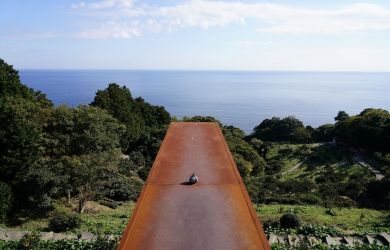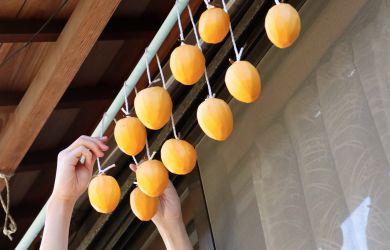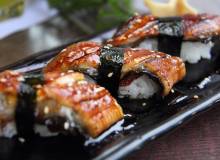
February 18, 2010
Mt. Mitake
Get away from it all—and enjoy the year’s first blossom—on the outskirts of Tokyo.
By Metropolis
Originally published on metropolis.co.jp on February 2010

Photo by Mandy Bartok
So you’ve scaled Mt. Fuji and are looking for your next challenge? Or maybe you’re just aiming to banish the winter blues with a daytrip to an uncrowded natural escape. There might still be a chill in the air, but it’s time to drag those hiking boots out of the closet and dust them off for a trip to the mountains. Forget the usual suspects – Takao and the peaks of Nagano – and set your sights on Mt. Mitake, one of the easily accessible but lesser known hikes just beyond Tokyo’s western suburbs.
Make this trip as the last frost thaws from the hills and you’ll be forgiven for jumping off the train a few stops too soon. While many of Japan’s nature enthusiasts are still impatiently awaiting the arrival of the sakura, plum blossoms are heralding the true start of spring. Just past Hinatawada station on the JR Ome line, it’s hard to miss the patchwork of wine – and rose – colored trees that cling to the hillside in the Yoshino Baigo orchard, visible from the train as bold splashes of color on a pale winter canvas.
It’s worth disembarking for a wander through the orchard, which boasts an amazing 25,000 trees, all flowering in a variety of different colors. Though the site is a good fifteen minutes’ walk from the station, during peak blossom season there are food stands lining the route, and you can pick up all the necessary picnic fixings—as well as a bottle of plum wine for post-hike celebrations. The best spot to witness the colorful spectacle is from the ridge path ringing the top of the orchard, where a well-placed rest house affords clear views over the dark Chichibu hills and the candy-colored trees below.
From Yoshino Baigo, hiking trails crisscross the Chichibu region, and a series of paths will eventually take you to the summit of Mt. Mitake itself. If you’re looking for a bit of an easier outing, backtrack to the train line and ride the rails up a few stops to Mitake station, where buses run hikers to a cable car at the mountain’s base. The quick trip cuts the hiking time to a mere half an hour, making the ascent a fairly painless affair.
Just below the summit, visitors might feel like they’ve entered a time warp, as thatch-roofed houses in Mitake village – most dating from the Showa Period – welcome daytrippers with heaped portions of tororo soba, the regional specialty. The small community has been feeding pilgrims to the nearby Musashi – Mitake shrine complex for centuries. A stand-out with its crimson buildings and ornate decor, the shrine boasts a 2,000 year history and a treasure hall with two exquisite works of art: a stunning set of armor from the 12th century, considered one of the best in the nation, and a 13th century saddle inlaid with mother of pearl.
From Mitake’s peak, options to extend the adventure seem limitless. If time is no issue, make the 90-minute trek to the summit of nearby Mt. Otake. The crowds on this leg of the journey often melt away, leaving hikers with only the scenic panorama of moss-covered boulders, rushing streams and ancient stone waymarkers for company. Particularly picturesque are the hidden waterfalls along the route and the “Rock Garden,” where the trail winds through a narrow, secluded valley. And though glimpses of the capital can be seen on clear days, there’s no better place so close to the city to feel so far away from it all.
Trip Tips
To get to Mt. Mitake and the Yoshino Baigo orchard, take the JR Chuo line to Ome station (in most cases transferring at Tachikawa), then change to the JR Ome local line. Yoshino Baigo is a fifteen minute walk from Hinatawada station. Entry to the orchard costs ¥200 during plum blossom season, with the Yoshino Baigo Ume Matsuri running Feb 20-Mar 31. Mitake station is several stops up the line, and buses (¥270) run to the cable car (¥1,090 roundtrip) at the base of the mountain. Maps of the area’s hiking trails in both English and Japanese can be picked up for free at the Mitake Visitors Center in Mitake village, below the summit. The Lonely Planet’s Hiking in Japan also provides information on trails in the Chichibu-Okutama region.








